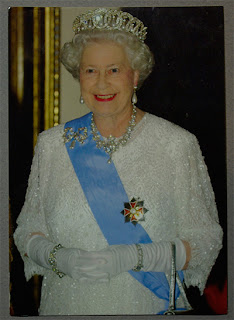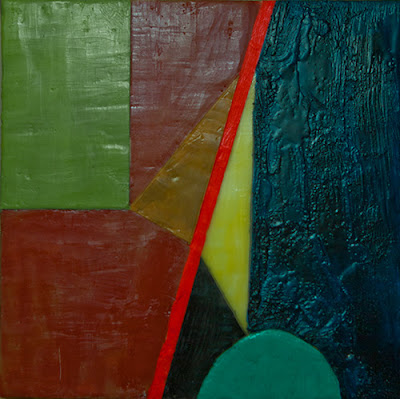To be sure, this is an image which needs no caption.
When I created the button, I knew immediately that it was really quite wonderful. Reader: know full well that I am not given to self-praise; I understood that this was an exceptional experience. I had to give the button a name and so I sat back and tried to think of what would be suitable for this splendid object. Finally, I had a name:
For the Queen.

I should never, ever have put it on the web site. I put a high price (for a button) on it. Yesterday it sold. I had forgotten that I had put it on the web site. The temptation to lie to the customer and say that through my inefficiency it was already sold but I had neglected to mark it so on the web site was, for one brief, dark moment, overwhelming. I did not do that. So, now, as of tomorrow, it will be gone from my world along with several other buttons.
The irony in all of this is that just a few days ago, we had decided to stop selling buttons online. It was way too much work and we were no longer making buttons. The site would have been disabled for online purchasing. (The buttons are still on sale in a local gallery, Grand Isle Artworks.)
 I am experiencing a real sense of loss. It is even greater than when I sold a painting I was very fond of. The painting, though, had been in a gallery for several months. It was not part of my daily life as this button was. It even provided a taking off point for a sketch I did when I first tried working with egg tempera.
I am experiencing a real sense of loss. It is even greater than when I sold a painting I was very fond of. The painting, though, had been in a gallery for several months. It was not part of my daily life as this button was. It even provided a taking off point for a sketch I did when I first tried working with egg tempera. I actually have a history with Queen Elizabeth II. When I was nine and she was not yet Queen, I stood about 10 feet from the back of the train where she and Philip were standing and sang "The Maple Leaf Forever", a popular and patriotic Canadian song. I have never forgotten that experience. And, from that moment on I became a Royalist and an Anglophile.
Looking back over the years I realize now that Elizabeth was a woman respected and known to all the world. In the the early fifties and for many many years after that, this was a rare thing. Little girls did not have very many women to look up to which were in the public vision. Queen Elizabeth II has been in just such a role ever since I saw her. But my association went well beyond the person of the Queen. I hold an Honors Masters Degree in English Literature and the infamous A.B.D. in British Literature. I have a rather large and beautiful (though not valuable) collection of British stamps.
In addition to Her Majesty the Queen, the idea that women could do other things besides keep house, nurse, teach, cook, and look beautiful (all but the last are fine choices indeed but none of them appealed to me as a child) was created and maintained by the following:
Virginia Woolf
Dinah Shore
Judy Garland
Dame Edith Sitwell
Emily Bronte
Edith Piaf
Rachel Carson
Susan Hayward
Tessie O'Shea
Ava Gardner
Bette Davis
Amelia Earhart
Carol Burnett
Beverly Garland
Julie Andrews
Rosalind Russell
Katherine Hepburn
Mae West
Vesta Tilley
Colette
There are others of course, but the list above (in no particular order) delineates those I knew about before I was 21.











